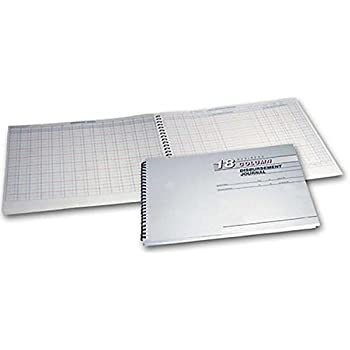
Its purpose modified accrual governmental reporting overview is to ensure accuracy and consistency of financial data, which is vital for informed decision-making and maintaining financial integrity. Bank reconciliations involve comparing the business’s financial statements with the statements it receives from the bank. This helps to ensure that the business’s records accurately reflect the transactions that have taken place in its bank account. Accounts payable reconciliation makes sure that general ledger balances match those in underlying subsidiary journals. It adheres to accrual accounting principles and reconciles balances for credit card statements to the appropriate payables account.
- Using a double-entry accounting system, as shown below, ABC credits cash for $2,000 and debits assets, which is the equipment, by the same amount.
- In essence, reconciliation acts as a month-end internal control, making sure your sets of records are error-free.
- This helps ensure that the company pays vendors and suppliers accurately and on time.
- Please contact an accountant, attorney, or financial advisor to obtain advice with respect to your business.
What Are Common Problems With Bank Reconciliations?
For lawyers, this process helps to ensure accuracy, consistency, transparency, and compliance. The reconciliation process involves comparing internal financial records with external documents to identify and correct discrepancies. This includes investigating any differences, making necessary adjustments, and documenting the process for accuracy. Finally, the reconciliation is reviewed and approved to ensure the financial records are accurate and complete. Reconciliation in accounting is the process of comparing multiple sets of financial records (such as the balances and transactions recorded in bank statements and internal records) to ensure their correctness and agreement. A company prepares a bank reconciliation statement to compare the balance in its accounting records with its bank account balance.
What is a three-way trust reconciliation?

These steps can vary depending on what accounts you are reconciling, but the underlying premise is always the same – compare your ending balance against supporting documentation and make any adjustments as needed. While reconciling your bank statement, you notice the bank debited your account twice for $2,000 in error. Tick all transactions recorded in the cash book against similar transactions appearing in the bank statement. Make a list of all transactions in the bank statement that are not supported, i.e., are not supported by any evidence, such as calculate estimated tax payments and associated penalties a payment receipt. Inventory reconciliation makes sure that physical inventory counts align with your general ledger. It accounts for transactions related to inventory and accounts payable and reconciles discrepancies.
Similarly, if you were expecting an electronic payment in one month, but it didn’t actually clear until a day before or after the end of the month, this could cause a discrepancy. The accountant of company ABC reviews the balance sheet and finds that the bookkeeper entered an extra zero at the end of its accounts payable by accident. The accountant adjusts the accounts payable to $4.8 million, which is the approximate amount of the estimated accounts payable.
Keeping your accounts reconciled is the best way to make sure that your balances are accurate and an important part of ensuring adequate financial controls are in place. While very small businesses can use cash basis accounting, if you have employees or have depreciable assets, you’ll need to use accrual basis accounting. Accuracy and completeness are the two most important things when reconciling accounts, and these are what accounts for effective and proper account reconciliation. Additionally, reconciling accounts on time consistently is also essential to maintaining financial integrity.
Simplify Cash Reconciliation: The Future of Finance with HighRadius and Sage Integration
This helps ensure that the company pays vendors and suppliers accurately and on time. To quickly identify and address how to add tax to a price errors, reconciling bank statements should be done by companies or individuals at least monthly. They also can be done as frequently as statements are generated, such as daily or weekly. Bank reconciliation statements are effective tools for detecting fraud, theft, and loss.
By performing reconciliations against the general ledger, the company can ensure that its financial records are accurate and up-to-date. Accountants typically perform an account reconciliation for all their asset, liability, and equity accounts. This process involves reconciling credit card transactions, accounts payable, accounts receivable, payroll, fixed assets, and subscriptions to ensure that all are properly accounted for and balanced. Account reconciliation is the process of cross-checking a company’s account balance with external data sources, such as bank statements.
In this case, the reconciliation includes the deposits, withdrawals, and other activities affecting a bank account for a specific period. While the reconciliation process remains the same, with two sets of documents compared for accuracy, the difference lies in what is being reconciled. No matter what you’re reconciling, it will involve comparing two sets of records to determine accuracy. That’s why account reconciliation remains a key component of the financial close process. HighRadius’ comprehensive AI-powered Record to Report suite allows you to streamline and improve your business’s account reconciliationprocesses.
Using accounting software will make it much easier to reconcile your balance sheet accounts regularly. There are several steps involved in the account reconciliation process, depending on the accounts that you’re reconciling. This blog delves into the essentials of account reconciliation, outlining the step-by-step process, and exploring the various types of reconciliation. Understanding this fundamental practice is vital for businesses aiming to achieve accurate financial reporting and make informed decisions. Reconciliation for accounts receivable involves matching customer invoices and credits with aged accounts receivable journal entries.
Reconciliation in accounting—the process of comparing sets of records to check that they’re correct and in agreement—is essential for ensuring the accuracy of financial records for all kinds of businesses. For the legal profession, however, regular, effective reconciliation in accounting is key to maintaining both financial accuracy and legal compliance—especially when managing trust accounts. Most importantly, reconciling your bank statements helps you catch fraud before it’s too late. It’s important to keep in mind that consumers have more protections under federal law in terms of their bank accounts than businesses. So it is especially important for businesses to detect any fraudulent or suspicious activity early on—they cannot always count on the bank to cover fraud or errors in their account. To ensure accuracy and balance, the process of account reconciliation involves comparing the balances of general ledger accounts with the supporting sets of data sources, such as bank statements, invoices, and receipts.
